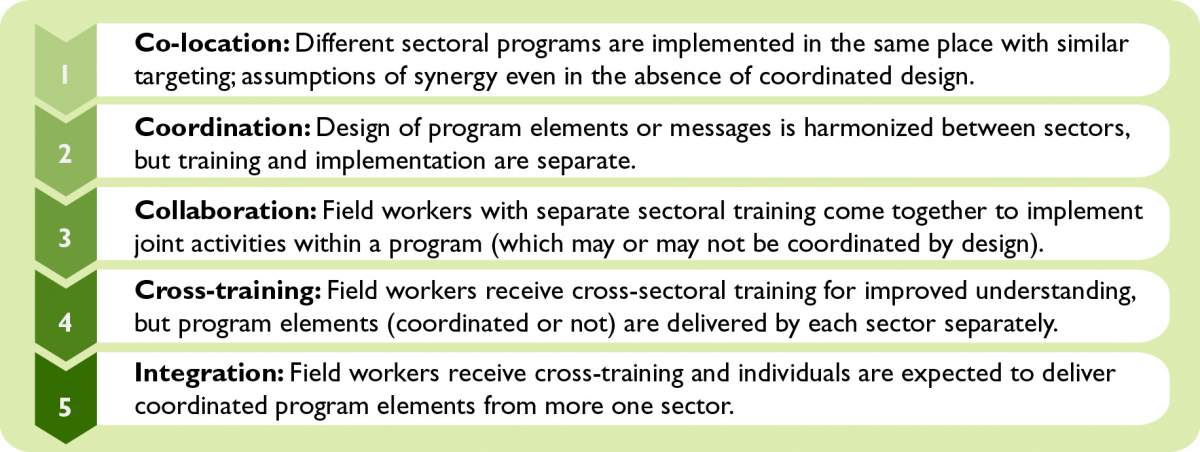In a project that is undertaking both agriculture and nutrition actions, is there someone "in charge" of seeing both sides work towards a common goal? Does a manager go into the field to see if her staff are coordinating activities with one another? Do community workers from the health clinic talk with extension agents from the agricultural co-op? With billions of dollars pushing development workers to link agriculture and nutrition, how are we really designing and measuring "integration?"
This study may help answer these questions, by suggesting definitions of integration for those in the international development field. Led by a senior researcher from the International Food Policy Research Institute (IFPRI), the authors focused on concepts like "integration champions" who help design or run a multisectoral project, the vision and capacity of people involved, and the structure and roles of partner organizations with different areas of expertise.
A team of interviewers met with a variety of stakeholders in Helen Keller International's Enhanced Homestead Food Production (E-HFP) project, located in the Eastern Region of Burkina Faso. The results of more than 60 interviews with designers, agricultural agents, health teachers, and beneficiaries proved to be very intriguing.

Most notably, the beginnings of an integration "typology" organically emerged—ways of thinking through how this concept can be effectively built into a project. In this case, there was a clearly articulated design that included harmonized messaging, where the staff linked agricultural activities with complementary nutrition messages. Model farmers at the community level were instructing women how to plant, grow, and harvest a select set of foods, while health facilitators would elaborate on nutritional values and proper preparation of those same foods. While the project was not explicitly designed to facilitate side-by-side interaction of the two sectors, the key messages from each side complemented one another, and were delivered to the same participants.
The contribution of this research effort is novel and small; the proposed typology is by no means a silver bullet for designers to ensure that a multisectoral project achieves its stated ends. However, it does offer concrete language that project stakeholders, no matter their technical background, can use as a jumping off point to guide discussions around design, or to discuss integration with different levels of staff. Giving partners the language to talk about integration can help turn some of the most challenging (and common) questions in multisectoral work into new opportunities.